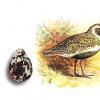In an accident, the culprit fled what to do. What to do if the perpetrator fled the scene of an accident. He will be required
Unfortunately, in life there are still often events in which the culprit of an accident is hiding from the scene. What should the injured party do in these cases when her car is damaged and the culprit is not in place? It happens that the victim did not even see and does not know who damaged his car. The provisions of the law (paragraph 2.5 of the SDA) oblige to remain at the scene until the arrival of traffic police inspectors and provide emergency assistance to the injured party.
Punishment for leaving the scene of an accident
- Arrest for up to 15 days or deprivation of driving license for 1-1.5 years (Article 12.27 Part 2 of the Code of Administrative Offenses).
- The same article of the Code in the third part also defines a more severe punishment in the form of 1.5-2 years with a fine of 30,000 rubles, if the participant in the accident, before completing the necessary procedures for investigating and examining his condition, violated the ban on the use of alcoholic beverages, narcotic and medicines containing psychotropic substances. That is, until the traffic police inspector issues an accident, you cannot relieve stress with the help of alcohol or other means.
Article 12.27 part 2 of the Code of Administrative Offenses of the Russian Federation:
2. Abandonment by the driver in violation of the Rules traffic the place of the traffic accident, in which he was a participant –
entails deprivation of the right to drive transport vehicles for a term of one to one and a half years or administrative arrest for a term of up to fifteen days.
Article 12.27 part 3 of the Code of Administrative Offenses of the Russian Federation:
3. Failure to comply with the requirement of the Rules of the Road to prohibit the driver from consuming alcoholic beverages, narcotic or psychotropic substances after a traffic accident in which he is involved, or after the vehicle was stopped at the request of a police officer, until an authorized officer conducts an examination in for the purpose of establishing a state of intoxication or until an authorized official makes a decision to exempt him from such an examination - shall entail the imposition of an administrative fine in the amount of thirty thousand rubles with deprivation of the right to drive vehicles for a period of one and a half to two years.
The law provides for various penalties to prevent attempts to avoid liability or falsify causes. The phrase "disappeared" refers to such an action when the perpetrator or participant in the event irretrievably left the scene of the incident, leaving no information about his whereabouts. Such an offense is punishable by deprivation of a driver's license or arrest.
What to do if the perpetrator of the accident fled
Consider various options when, which threatens him with deprivation of rights for 1-1.5 years. What to do to the injured car owner who was injured? AT this case There are two possible correct actions:
1. The victim was driving a car when the culprit fled the scene of an accident. What threatens and what are the prospects for obtaining compensation.
No need to headlong chase the culprit of the accident. This can lead to the next more serious accident, the culprit of which will be the pursuer. You just need to follow the requirements exactly, namely:
- remember more information about the participant who fled the scene of the crime and his vehicle. Specifically: color, model of the car, registration numbers, special signs of the car and the driver;
- stop the car, set the emergency signaling mode of lighting devices, put an emergency sign at the scene, keeping its traces;
- call the police, call the traffic police, reporting the signs of the escaped culprit of the accident, wait for the arrival of the inspectors;
- find and write down the contact details of witnesses to the incident. These can be your passengers, including relatives, pedestrians passing by, or private cabs standing on the side of the road. Ask them to give their testimony to the traffic police;
- if you have a photo and a video camera, take a detailed photo of the accident site with information about the location and damage to the car, traces of the accident on the road with reference to the identification landmarks of the collision site. If available, keep a record of the traffic situation at the time of the incident;
- if the position of the car completely blocks traffic, then clear the roadway, keeping traces and objects related to the accident, drawing up an accident diagram together with witnesses;
- upon arrival of the traffic police inspectors, give them your testimony, get your copy of the accident report. Check the correctness of the scheme of the accident by the police officer, the presence of witness statements, an indication that the perpetrator fled the scene.
Video: What to do if the culprit of the accident has disappeared?
It should be borne in mind that the absence of the perpetrator himself at the scene of the incident is not a reason for recognizing him as such until the end of the investigation. Leaving the scene of an accident for unexcused reasons is a separate offense and is charged to the perpetrator, regardless of the results of the accident investigation.
2. The victim was absent at the time of the incident, and the perpetrator fled the scene of the accident. What threatens and what are the prospects for obtaining compensation.
If, upon arriving at the abandoned car, you find damage, presumably caused by a collision with another vehicle, then you should perform the following actions:
- call the police and call the traffic police to the scene;
- to interrogate people who are constantly nearby about the incident, trying to find witnesses to the event and some information about the culprit of the damage. Write down the contact details of any witnesses to the incident. They can be people at the bus stop, sellers of nearby stalls and stalls, parking guards, drivers of cars standing nearby;
- wait for the traffic police inspectors to be called, testify, describing in detail all the damage caused, demand a copy of the incident report;
- check for nearby video cameras and photo recorders that could record this incident and, with the help of police officers, view and obtain a copy of their recording.
In both cases, it will be possible to receive compensation for the damage caused only after the culprit of the accident, who fled the scene, is identified and found. If he is insured under OSAGO, then the victim, when applying to the insurance company, will be able to receive a vehicle relying on the restoration. If not the driver is installed, but the vehicle itself, which caused damage through the fault of the driver, and the owner of this car has, then the victim must apply for compensation to his insurance company. The company is obliged to pay the victim the insurance amount necessary to restore his car.
If all the searches for the culprit of the accident by the traffic police are unsuccessful and the victim is not insured under CASCO, then he should not expect any compensation for restoring the car. You can only count on compensation for harm to health if it occurred in the case of the participation of the victim in an accident. Such compensation is paid by the Union of Auto Insurers (RSA). Restoring a damaged car will have to be out of your own pocket.
About 200,000 accidents occur in our country every year. Unfortunately, in about 10% of cases, the perpetrator of the accident, having knocked down a person or simply hooked another car at low speed, tries to leave quickly in order to avoid responsibility. In addition, 5% of those who escaped, when reporting an insured event, provide false information about the causes of damage to the car. What happens if the driver fled the scene of an accident? Punishment for such an act depends on many factors, but most often administrative responsibility cannot be avoided.
problem question
The majority of people, having hit someone else's car, are hiding from the scene. And if no one has seen this yet, then the temptation to leave increases greatly. The traffic police is also not very interested in finding the culprit, since this is almost impossible.
As lawyers note, traffic cops will actively search for a driver only if people were injured or an accident led to the death of a citizen (citizens). When your car is just slightly dented, the chances of finding the culprit are almost zero.
Scope of responsibility
If the driver fled the scene of an accident, he is threatened. However, the offender will be punished only, of course, if his identity is established. The victim can still receive compensation for damage to life and health under the OSAGO policy and without bringing the culprit to court.
An accident is an incident that occurred in the course of a vehicle's traffic and with its participation, in which people are injured or killed, vehicles, structures, cargo are damaged, or there is other material damage.
It often happens that the driver, having become the culprit of the accident, violates the requirements of the Rules of the Road, which indicate that in this case it is necessary to stop and not move anywhere from the scene of the accident. If the driver does not comply with such requirements, then he best case threatens and at worst - arrest up to 15 days. When a person fled the scene of an accident, the punishment will always be tougher than if he had stayed until the traffic police arrived.

Arbitrage practice
Quite often, the inspector incorrectly qualifies the crime committed by the driver and, in this regard, holds him accountable for a more serious offense than he committed. What are these situations and how to appeal against his actions? He, for example, can indicate in the protocol that the driver fled the scene of an accident, but in fact, not in all cases his actions can be so qualified.
However, the inspector's mistake can be proven and thus win the case. You can try to reduce the amount of the fine or even achieve complete exemption from liability. It also happens that drivers do not suffer from the inspector, but from the fraudulent actions of other drivers who unreasonably accuse them of causing damage.

Algorithm of actions in case of an accident
How to behave in case of an accident?
- It is necessary to stop immediately, turn on the warning lights, put up an emergency stop sign and do not move things that are related to the incident.
- If there are victims, it is necessary to provide and urgently call an ambulance, and in the most extreme cases, they must be taken to the hospital in their car (to catch a ride), and then return to the scene of the accident.
- If necessary, clear the roadway.
- Write down the addresses and names of eyewitnesses, fix traces and objects that relate to the incident.
- Call the police and wait for law enforcement officers.
Much worse when the culprit fled the scene of an accident. Leaving after the accident, of course, different reasons: fright, confidence that no one saw this, etc. However, in this case, the driver deprives himself of hope for an objective and complete study of all the details of the accident and the opportunity to collect evidence at the scene. There is also a risk that bystanders will describe the situation differently than it really was, distort events. But if the driver later comes to his senses and confesses his guilt, the likelihood that he will go unpunished is very scanty.

Leniency
Staying at the scene is necessary for two reasons. The driver will promptly provide assistance to the injured (victims) and promptly call an ambulance. Delivery of the victim to the hospital in the future will have importance when determining the driver's fault. But if a citizen fled the scene of an accident, the most severe punishment awaits him.
At the same time, the situation when the perpetrator cannot provide assistance on his own and leaves the scene of the accident in order to call the police and medical care. Great importance when qualifying an act, it has the severity of bodily injuries that the victim received.

Criminal liability
It is possible to bring the perpetrator of the accident to criminal liability only in the event of infliction of medium-gravity harm or serious harm to the health of the victim, or his death. If all these Negative consequences occurred precisely as a result of the fact that the driver left the scene, the culprit can be sentenced to imprisonment for up to three years and deprived of the authority to engage in certain activities.
That is, criminal liability is possible under such a combination of circumstances:
- presence of guilt;
- infliction of damage to a citizen (citizens) of medium gravity, grievous harm or death.
If a person fled the scene of an accident, the punishment for this will depend on the severity of the consequences. When the driver's actions do not fall under the article of the Russian Federation, he will bear administrative responsibility. In this case, you may be deprived of your rights for a period of 1 to 1.5 years or arrested for 15 days.
Even if other persons are to blame for the accident, and the driver passing by noticed this, could inform the police and provide assistance, but did not do this, they also have the right to be held liable in administrative proceedings.
It is also necessary to remain at the scene of the incident to assist the police in investigating this case. All your explanations, actions to find witnesses, eyewitnesses, comments, participation in the inspection of the accident site and in the preparation of procedural documents can only play in your favor. But if the offender fled the scene of an accident, then this only complicates everything.

How to prove your innocence?
If you get into a traffic accident, even if all the facts indicate your involvement in what happened, in some cases you can win the case. To do this, it is worth trying to prove the procedural violations committed in the preparation of papers.
What is it for? Violations in the documents may result in the exclusion of the IDPS documents from the evidence in your case. Quite strict rules are established for the preparation of such papers. If a person fled the scene of an accident, liability can be mitigated in case of significant errors and inaccuracies in the preparation of the protocol. If they are identified, the IDPS documents can be tried to be recognized as inadmissible evidence and thus “destroy” the case.
At the same time, it is necessary to interrogate witnesses, the inspector, attesting witnesses, to find contradictions in their testimonies and point out violations of the law.
Appeal of affixing
As we have already mentioned, there is no penalty for this violation. Fled the scene of an accident - be prepared to lose your license or serve 15 days. A fine of up to 1,000 rubles is imposed only if traffic violations were established in connection with a traffic accident, but the driver did not leave after the deed. However, if you have been deprived of your rights, you can appeal against the affixing of the court.

Important Notes
It should be noted that drivers are prohibited from drinking alcohol (taking drugs, etc.) after an accident. If he ignores such demands, then he, again, faces punishment. On the basis of the Code of Administrative Offenses of the Russian Federation, you may be required to pay a fine of up to 30,000 rubles and deprive you of your rights from 1.5 to 2 years. Therefore, it is important not only not to leave the scene of the incident, but also not to drink alcohol, this is only in your interests.
Results
If the driver fled the scene of an accident, the consequences can be very different, but the most unfavorable outcome is criminal liability. With a slight damage to a parked car, you are unlikely to be found and punished, but if there are human casualties, then it will be extremely difficult to go unnoticed.
The investigation of a traffic accident is designed to correctly identify the perpetrator and the victim. Indeed, in accordance the assignment of insurance payments for the accident will depend on the status of the participant in the accident. In 90% of cases, everything is formalized without any "surprises" from the violators, however, non-standard situations also occur. Once in them, car owners immediately get lost and do not know what to do if they get into an accident, and. This article will tell you in detail what needs to be done and how the investigation will be carried out.
How to find a driver who fled the scene of an accident
Consider a situation that occurs in every tenth accident: the driver responsible for the accident leaves the scene. The injured driver must not chase, since the search for cars that fled the scene of an accident is the prerogative of the traffic police.
Important: if the victim follows in pursuit of the offender, then his actions, regardless of motivation, will qualify as leaving the scene. And this entails administrative punishment according to Art. 12.27 Administrative Code:
Leaving by a driver, in violation of the Rules of the Road, the scene of a traffic accident in which he was a participant, entails deprivation of the right to drive vehicles for a period of one to one and a half years or administrative arrest for a period of up to fifteen days.
After an accident, it is necessary to strictly follow the measures regulated by the traffic rules:
- enable alarms;
- place an emergency stop sign on the roadway;
- call by phone and, if necessary, an ambulance team.
If the car has a DVR, then it should be turned off immediately in order to save a record of the accident on the device.
When calling employees, you must indicate that the perpetrator has fled, describe the signs of the car and, if you managed to remember, his state. room. Before the arrival of the traffic police patrol, it is impossible to leave the scene of the accident. And only after the registration of documents fixing the fact of an accident, you need to go to the police station and declare the search for the culprit of the incident.
According to Part 1 of Art. 12.27 the driver is involved for failure to comply with the obligations stipulated by the traffic rules in connection with an accident, which entails the imposition of an administrative fine in the amount of one thousand rubles.
The second part assumes responsibility for hiding the driver from the scene of an accident and entails deprivation of the right to drive vehicles for a period of one to one and a half years or administrative arrest for a period of up to fifteen days.
Let's figure it out what is an accident. Many people think that an accident is an incident in which there are several participants, among which there are people or cars, but this is not so. For example, drivers whose cars are insured under CASCO know perfectly well that they have to document the fact of an accident in any case - for example, if they hit a tree or a pole, this qualifies as an accident.
In the SDA, in paragraph 1.2 " General provisions", it is indicated that An accident is an event that occurred during the movement of a vehicle on the road and with its participation, in which people were killed or injured, vehicles, structures, cargo were damaged, or other material damage was caused.
In practice, there were many cases when a driver, for example, slightly touched a pedestrian with a mirror, and after mutual accusations and disputes, the participants said goodbye to each other.
The driver, having made sure that there are no claims from the person whom he touched by the mirror, can continue driving.
However, there must be facts confirming the absence of claims, namely, the absence of wounds or other injuries on the above person. Only in this case the fact of the accident will not be established.
If a citizen wants to take revenge on the driver, he will simply apply to the police. At the same time, one statement about hiding the driver from the scene of an accident will not be enough, because the traffic rules clearly indicate the damage or injuries that a citizen should have received, so one of the evidence will be a medical report on harm to health.
Leaving the scene of an accident will not be:
- failure to comply with the requirements of road users regarding the rearrangement of the car in order to free the lane for the movement of vehicles. The SDA regulates this possibility, however, it prescribes, in the presence of witnesses, to fix the position of the vehicle until it is moved, traces, objects;
- transportation of the victim to the hospital in his own car. At the same time, after these actions, the driver is obliged to return to the place of the accident;
- if drivers of vehicles, after assessing the circumstances, drawing up an accident scheme and signing it, go from the scene of an accident to the nearest traffic police post or to a police agency to file an accident.
Formally leaving the scene of an accident is the absence of a citizen at the time of registration of the incident by police officers. If the driver left or left the scene of an accident, but arrived at the time of registration, this will not be a violation.
With all this, the rules of the road in paragraph 2.
5 oblige participants in an accident to wait for the arrival of traffic police officers, but do not impose an obligation, which is to wait for employees, and also do not indicate the waiting time.
At the same time, there is a fundamental difference between the words “expect” and “wait”. To establish it, let's turn to Ozhegov's explanatory dictionary.
The concept of "expect": to be somewhere, counting on the appearance, arrival of someone or something. Thus, the rules establish only one requirement - to wait, and this requirement is not specified.
The concept of "wait": to stay until the appearance of someone or something expected. And this concept, as we see, is more concrete.
How to evaluate the behavior of a driver who left the scene of an accident, but then returned? This fact cannot be called concealment, and the action of this participant in the accident does not qualify under Part 2 of Art. 12.27 of the Code of Administrative Offenses and can only be qualified under Part 1 of Art. 12.27.
If the second participant chose not to call the traffic police and settled with you on the spot, exchange receipts.
Receipts must contain the following text: as a result of the fact that it seemed to such and such drivers that the cars were damaged as a result of a possible accident, the drivers examined their cars and did not find traces on them indicating the fact of an accident, and therefore continued to move. There was no need to call the DPS. The parties have no claims against each other.
Consider example. The driver fled the scene of the accident: a nearby car was hitched in the parking lot and the driver, hoping that no one had seen this event, left.
When the traffic police, according to testimony, found and called this driver, he agreed on voluntary compensation to the person who was damaged by his actions.
Thus, only the conflict between the two citizens has been exhausted, because the case on an administrative offense has already been initiated and the citizen cannot withdraw his application for an accident. Let me remind you that a citizen was attracted for the fact of an administrative offense expressed in hiding from the scene of an accident.
You can also get to auto-substitution.
In parking lots and parking lots near supermarkets, and sometimes, depending on the damage, and on the road, a person may approach you who will claim that some time ago he saw you damage his vehicle with your bumper or other part of the car. There may also be witnesses. Of course, the driver, being absolutely sure that he did not inflict any damage, especially since there are no marks on his car, turns around and leaves.
This circumstance is the basis for the second driver to call the traffic police, after which everything unfolds according to the already known pattern.
In court, after a while, it will be extremely difficult to prove that it was really not you who committed the traffic accident, because it was the arriving traffic police officers who had not waited for the driver to determine the degree of guilt, to establish the primary damage.
In the future, of course, as a result of comparing two cars, the degree of probability of causing damage to your car will be determined, but this fact will not be of decisive importance.
If you still intend to leave the scene of an accident, take a few dozen photos that could confirm the fact that you have nothing to do with these damages! In this case, photos showing damage to the second car will help - the presence of dust, dirt, additional scratches, possibly exposed rust (if you are offered to pay for damage caused a few weeks ago), is important and in general appearance car. On your car, you also need to fix possible scratches on those parts that could have caused damage, pay attention to the same dust and dirt.
If you were called to the traffic police to draw up a protocol on the fact of hiding from the scene of an accident, be careful. Demand an examination and experiment in order to establish a circumstance confirming that this could indeed have taken place with the participation of specific cars.
If you are asked to sign a diagram or other materials, never refuse it. Indicate that you disagree and put your signature.
Be sure to make a copy or take a picture of the document with a camera - in any document, a copy of which the citizen does not receive, you can later make various changes that are convenient for one of the parties.
Don't get into an accident and stand up for your rights! Good luck on the roads!
Source: https://ShkolaZhizni.ru/auto/articles/21796/
Definition - hiding from the scene of an accident
Hiding from the scene of an accident will not be the following cases:
– delivery of the victim to the hospital in his own car.
At the same time, this requirement in the SDA has a clear prescription obliging the driver to return to the scene of the accident after these actions;
- if the drivers of the vehicles involved in the accident, having assessed the circumstances of the incident and having previously drawn up an accident scheme, signed it and left the scene of the accident, go to the nearest traffic police post or police station to file an accident. The same applies to the simplified registration of an accident without calling the traffic police in accordance with clause 2.6.1 of the SDA.
Formally, leaving the scene of an accident is the absence of a person at the scene at the time of registration of the incident by the traffic police. If there is no participant in the accident at this particular moment, then an offense is actually formed.
If the driver left or left the scene of an accident, but arrived at the time of registration, this will not be a violation: no one restricts a citizen in the right of free movement.
But, nevertheless, how to regard the behavior of a driver who left the scene of an accident, but then returned? This fact cannot be called concealment, and the actions of such a driver do not qualify under Part 2 of Art. 12.27 of the Code of Administrative Offenses, but can only be qualified under Part 1 of Art. 12.27, that is, precisely as a failure to comply with the requirements for a participant in an accident.
If the second participant left the scene of the accident, then even if you are clearly guilty of an offense, this does not mean that you can or should also leave the scene of the accident. Write down the numbers of the second participant and try to find witnesses, then call the traffic police.
If the second participant chose not to call the traffic police and settled with you on the spot, still do not rush to leave. Exchange receipts and wait for the second participant to leave.
To prevent further proceedings, the receipts should contain the following text: “As a result of the fact that it seemed to such and such drivers that the cars were damaged as a result of a possible accident, the drivers examined their cars and did not find traces on them indicating the fact of an accident, in connection with which they continued to move. There was no need to call the DPS. The parties have no claims against each other." In other words, there should not be a direct indication that the fact of an accident was established, but the parties resolved the issue on the spot.
There is one delusion into which the participants in the accident, who fled the scene, introduce themselves. So, as a result of a traffic accident, the driver fled from his place. Let's say that a nearby car was hooked in the parking lot and the driver, hoping that no one saw this event, left.
When the traffic police, according to testimony, found and called this driver, he agreed on voluntary compensation to the person who was harmed by his actions. Thus, only the conflict between the two citizens has been exhausted, because the case on an administrative offense has already been initiated and the citizen cannot withdraw his application for an accident.
In court, voluntary compensation is recognized, and it will be an exclusively mitigating circumstance, but not a basis for terminating the proceedings. Recall that the citizen was involved for the fact of an administrative offense expressed in hiding from the scene of an accident. A road accident is recognized as the fact of causing any material damage.
Thus, any material damage caused by the movement of the vehicle is recognized as a fact of an accident. If you were nevertheless called to the traffic police to draw up a protocol on the fact of hiding from the scene of an accident, be careful. Demand an examination - make such a request in writing and reflect this fact in the explanations.
In the same way, demand an experiment to establish a circumstance confirming that this could indeed have happened with the participation of specific cars, including taking into account their dimensions. Having received a copy of the protocol and preparing for the court session, study the essence of the offense: under what circumstances, where and with what it is connected.
If you are asked to sign a diagram or other materials, never refuse it. Indicate that you disagree and put your signature.
Be sure to make a copy or photograph the materials, because in any document, a copy of which the citizen does not receive, you can later make various changes that are convenient for one of the parties.
AT modern life with a constant lack of time, it also happens that, having hooked a car, a law-abiding driver is ready to bear responsibility and leaves a note on the windshield indicating his phone number.
It is difficult to predict the reaction of the owner of the affected vehicle, but the consequences of this can be different .. From the circumstances described, it can be seen that all actions in violation of traffic rules in one way or another can fall under the qualifications of both Part 1 and Part 2 of Article 12.27 of the Code of Administrative Offenses.
At the same time, in the case of building the right line of defense, it is possible to achieve a reclassification of the offense from part 2 to part 1, more liberal and limit yourself to paying a fine.
Source: http://www.samsebeyurist.ru/avto/162-skrytie-s-mesta-dtp.html
Damage when leaving the scene of an accident: who will pay?
“I fled the scene of an accident, will I be deprived of my license?” - this question is asked by many motorists in specialized forums and Internet sites. Often this question is heard in the office of law firms.
Punishment for such a gross misconduct will not take long, however, the number of drivers who leave the scene of a traffic accident does not decrease. What if he was confused and fled the scene of the accident, and will insurance be paid for damage in an accident, and in general what to do if the culprit left, leaving your broken car in the middle of the roadway?
What is the liability for leaving the scene of an accident?
Accidents can be serious and not very serious, however, according to the law of the Code of Administrative Offenses of the Russian Federation, all of them are subject to registration. This is also necessary for traffic police statistics, if these are accidents that caused human losses, as well as for insurance companies.
If the driver hit someone else's car with his car and fled the scene of the accident, then the following sanctions will be applied to him, at the choice of the court:
- deprivation of a driver's license for a period of 1 to 1.5 years;
- administrative arrest for 15 days.
Responsibility is quite serious, so the court determines the measure of punishment. The content of the protocol of the administrative violation, the explanation of the culprit, if identified, the severity of the traffic accident, and whether there were victims can influence his decision.
If the consequences of an accident caused serious injuries and deaths of people, then in addition to administrative responsibility, there will also be criminal responsibility, which is provided for by the articles of the Criminal Code of Russia and the Code of Criminal Procedure.
Often, auto lawyers hear the same question: “What measures can be taken against me if I moved the car or left without noticing the accident?” Note that each case is very individual, and even in a hopeless situation, a positive decision can be made.
We will consider such situations below, but in all other cases it is better not to do this.
When can you leave the scene of an accident?
Today, there are several circumstances when a driver can leave the scene of an accident, but all of them have nothing to do with a spontaneous county. Actions during an accident must always be carried out clearly according to the instructions, and each driver must name the sequence, even if he is awakened at night.
If a traffic accident occurs, the first thing the driver should do is stop and immediately turn on the alarm. In severe collisions, heavy braking, and in some vehicles, when airbags are deployed, the hazard warning lights turn on automatically.
The next step is to check the condition of the passengers and whether there are any injured people in the other car. If there are no casualties, that's good. Check how severe the damage to your car is.
Sometimes light collisions and a durable paintwork keep the car safe. If there is no damage, then we can say that there is no accident. But check the other car too.
If damage is found, the traffic police should be called.
As for the movement of cars between which a collision occurred, there must be good reasons for this, and in addition, certain procedures must be followed.
You can move your car if:
- if it blocks the passage of other participants in the traffic flow;
- if the car creates an obstacle for the entrance of an ambulance, and there are victims at the scene of an accident who need a doctor.
In other circumstances, it is undesirable to move the car before the arrival of the police officers, since this may be seen as an intent to turn the circumstances of the accident in favor of one or another participant, who will then worry - “Will they deprive me of my driver's license”?
In order to remove a car that interferes with traffic, you need to:
- draw a diagram of an accident, fix the initial situation, and in the protocol describe the reasons why you think that there is an urgent need to move the vehicle;
- fix the position of cars using photo and video shooting, while the signs of vehicles should be clearly visible on these images and, preferably, geolocation is enabled;
- take contacts from witnesses and eyewitnesses of the accident, as well as carry out all activities in their presence.
All these actions must be completed so that later you do not ask questions to the lawyer: “Will they deprive me of my rights for illegal actions.”
Cases when the driver left the scene of the accident and did not receive any punishment may also be of the following nature: for example, there are victims at the scene of the accident who need to be urgently delivered to a medical institution.
At the same time, there is no way to call an ambulance or send the victim on a passing car.
Then, having performed all of the above actions, namely, fixing the primary position in which the car stopped, taking a photo, giving explanations in the presence of witnesses, as well as taking their contacts, you can take the wounded man to the nearest medical center. And then return to the scene and wait for the traffic police.
If the documents are not properly executed, then the traffic police may decide that the driver fled the scene of the accident and is trying to avoid responsibility.
In addition, in this state of affairs, there may be problems with compensation for damages. Even if you are not at fault for the accident, it will be impossible to prove otherwise in court.
Europrotocol solves the problem
Sometimes circumstances develop in such a way that a minor collision can disrupt all plans. It is possible to issue it without the intervention of the traffic police, but there are certain conditions for filling it out. Many drivers do not use this right because they do not know the nuances and are worried "Will I be deprived of my license for fleeing the scene of an accident."
Lawyers convince - no, your actions will not be regarded, so that the driver left after the accident, as all documents will be issued. Trite, you can immediately go to the insurance company with a copy of the completed European protocol and not waste time sending the application by mail.
Europrotocol can be issued in such cases:
- damage not exceeding 50 thousand rubles;
- there are no casualties in the accident;
- drivers are in solidarity in their opinions, who is the culprit, who is the victim;
- Both drivers have OSAGO policy.
Registration of the Europrotocol is a guaranteed way to solve serious problems quickly and without unnecessary time costs.
Yes, your car will be sent for examination in the future, yes, you will have to tinker with documents, but you can save yourself and other road users time. Having issued a notice of an accident, you can not worry, and not think: "I will be punished for this or not."
The culprit fled, what next?
Such cases on the road are also not uncommon. If you were hit by another car, and its driver left on his own business without stopping, then the situation is, of course, very complicated.
After all, if there is no culprit, then there is no compensation. Therefore, try to squeeze the maximum benefit out of this problem.
Act according to the well-known accident scheme, but pay special attention to witnesses, eyewitnesses, as well as independently search for your offender.
Almost any driver, getting into an accident, is in a small trance - a state in which he is confused and cannot understand and remember anything. Such behavior is the worst possible manifestation of human feelings in the event of an accident, so some of the actions of participants in an accident may be strange ... For example, being in shock from what happened, the culprit of a traffic accident can simply disappear. In this article, we will consider what actions the injured party should take if the culprit fled the scene of an accident, and what actions should not be taken.
First steps after an accident
The first rule that the injured party to the accident should be guided by is to try to immediately remember the signs of the car guilty of the accident. For this, you need to remember:
- state registration number of the car;
- brand and color of the car;
- the place and nature of the damage to the body received by the culprit in a collision.
If, as a result of an accident, these signs were not recorded, in no case should you try to chase the car that caused the accident - such an action will threaten administrative or even criminal punishment for leaving the scene of the accident. In such a situation, one should be guided by the rule - if the culprit of the accident has disappeared, then the damage as a result of the accident will be obliged to pay your own insurance company within the time limits established by applicable law.
Protocol registration procedure
Even if the perpetrator of the accident fled the scene, the victim should be guided by the established traffic rules, which consist of the following steps:
- Turn on the alarm.
- Post an emergency stop sign.
- Call an ambulance if needed.
- Call the traffic police and call the inspectors to the scene.
- Find witnesses to the incident and those who could remember at least some information about the culprit of the accident.
Next, you should wait for the arrival of traffic police officers. In the event that witnesses say that they need to go somewhere, but the traffic police officers do not arrive by this time, be sure to take their contact information in order to subsequently contact them to testify.
After the arrival of traffic police officers at the scene of the accident, the following measures are required:
- bring traffic police officers up to date and introduce them to witnesses;
- explain to them that the perpetrator of the traffic accident has fled and provide all available information about him (together with witnesses);
- carefully make sure that everything that was written in the protocol is described down to the smallest details and, after verification, sign the protocol;
- drive to the nearest department of the traffic police, where you will need to write a statement on the search for the hiding culprit;
- call the insurance company and notify the representative of the insurance company that an insured event has occurred - an accident has occurred through no fault of the insured, and the culprit fled the scene of the accident;
- wait for the results of the search for the driver who fled the crime scene.
The procedure for processing documents
As soon as the culprit is found, it will be necessary to immediately make a decision - how to get insurance compensation from him - either by going to court or directly to the insurance company. There is also a mandatory procedure under which the victim will not be able to choose the option of receiving compensation if the perpetrator of the accident that day did not have a driver’s license for any reason, or there was no OSAGO, or he refuses to acknowledge the fact that he is the perpetrator of the road accident. - transport incident.
In any case, it should be remembered that it will not work to go to court only with a statement of claim - you will need to collect a small package of documents:
- certificate of an accident;
- protocol of inspection of the scene;
- damage assessment document.
If the culprit does not deny his guilt in the accident, and at that time he has a valid OSAGO policy, then you can safely contact the insurance company, and then, with the correct execution of all documents the first time, it will be possible to quickly receive insurance payments.
What to do if the culprit of the accident is not identified?
In the event that the culprit of the accident fled the scene and was not found during the operational-search activities, it is necessary to contact the insurance company. Employees of the insurance company must formalize the insured event that has occurred and prepare documents for the payment of insurance compensation. If the insurance company refuses to pay out OSAGO funds, you should not put an end to everything. In this case, documents should be prepared for their subsequent consideration in court without the participation of the perpetrator of the accident.
In this situation, the culprit should file a lawsuit, and the insurance company will be the defendant in court, since there will be no one to give claims for the recovery of insurance compensation. After drawing up a claim against the insurance company in which OSAGO was issued, you should wait for the start of the trial.
Based on all the testimonies of witnesses, the conclusion of the examination and the words of the victim, the court will make a decision. If the victim can prove the guilt of the second participant who fled the scene of the accident, the court will oblige the insurance company to pay compensation in full. After receiving a legal court decision, you should immediately contact the insurance company for payment.



















